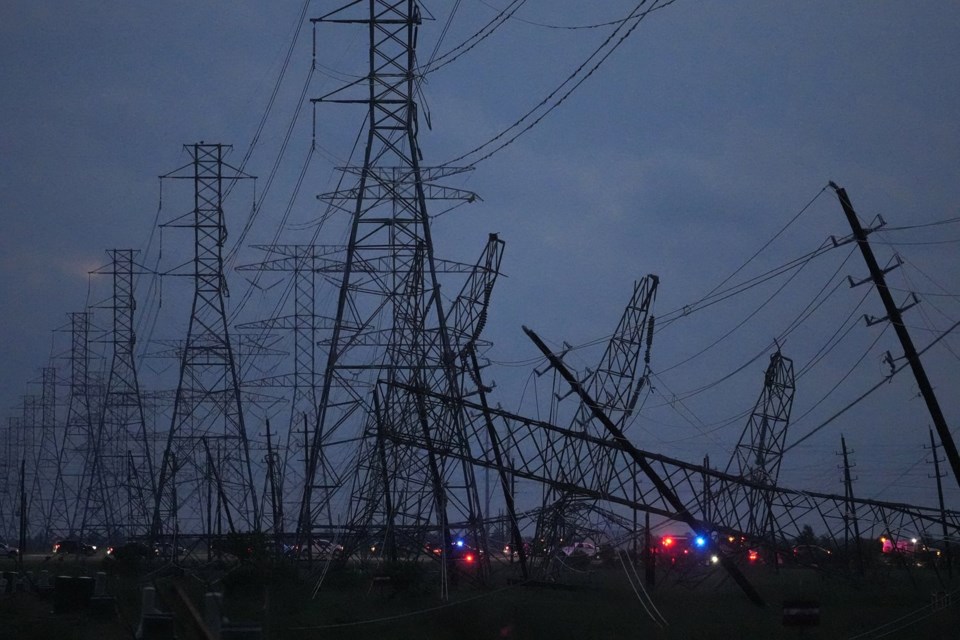Extreme heat in Mexico, Central America and parts of the U.S. South has left millions of people in sweltering temperatures, strained energy grids and resulted in iconic Howler monkeys in Mexico dropping dead from trees.
Meteorologists say the conditions have been caused by what some refer to as a heat dome — an area of strong high pressure centered over the southern Gulf of Mexico and northern Central America that blocked clouds from forming and caused extensive sunshine and hot temperatures. This extreme heat is occurring in a world that is quickly warming due to greenhouse gases, which come from the burning of fossil fuels like oil, gas and coal.
The high temperatures are stretching across the Gulf of Mexico into parts of the United States including Texas and Florida. The heat comes as thousands of people in Texas remain without power after thunder storms hammered parts of the state last week.
Shawn Bhatti, a meteorologist at the National Weather Service forecast office in Miami, said southerly winds from the tropics transported warm, moist air northward from the equator, which contributed to the unusually warm conditions.
South Florida has been hotter than normal. Miami International Airport recorded a daily high of 96 degrees Fahrenheit (35.6 degrees Celsius) on May 19. That surpassed the temperatures of 86 to 88 degrees (about 30 degrees Celsius) Miami normally sees this time of year.
A heat advisory issued by the NWS was in effect for parts of Texas Thursday. Temperatures along the Rio Grande were expected to rise up to 111 degrees Fahrenheit (43.9 degrees Celsius) and 95 degrees Fahrenheit (35 degrees Celsius) in the Davis and Chinati mountains.
Experts say the heat event raises concerns about ocean water temperatures and their influence on the upcoming Atlantic hurricane season.
The region is transitioning from an El Nino, where tropical cyclone activity in the Gulf of Mexico and the North Atlantic is typically reduced, into a La Nina pattern in which the likelihood of tropical cyclone activity increases, said Andrew Kruczkiewicz, senior researcher at the Columbia Climate School at Columbia University.
Kruczkiewicz said the extreme heat adds another ingredient to the risk of tropical cyclone activity this season, since these storms are fueled by warm ocean temperatures.
The National Oceanic and Atmospheric Administration said Thursday there is an 85% chance that the Atlantic hurricane season, which begins June 1, will be above average in storm activity.
Mexico’s brutal heat wave has been linked to the deaths of more than two dozen people since March. But the worst is expected for the end of this week and early next week.
Mónica Eréndira Jiménez, from the Mexican Weather Service, said the current heat wave will be one of the longest and most worrisome of 2024 because it's affecting the vast majority of the country. In May, more than 46 locations had record temperatures.
The situation is especially serious in places like Mexico City, which on May 9 had a record high of almost 94 degrees Fahrenheit (34.3 degrees Celsius) and is expected to reach 95 degrees Fahrenheit (35 Celsius) in the coming days. In the capital, heat combines with pollution so ozone concentrations are expected to increase, warned the National Autonomous University of Mexico's climate change program.
The impacts on wildlife have shocked scientists, who reported more than 130 howler monkey deaths in the southeast jungles and higher bird mortality in the northern part of the country likely from heat and other factors.
With below-average rainfall throughout almost all of the country this year, lakes and dams are drying up and water supplies are running out.
Protests have multiplied. A group of police agents blocked six lanes of traffic Wednesday on a main Mexico City avenue, saying their barracks lacked water for a week and the bathrooms were unusable.
Authorities have had to truck in water for hospitals and to firefighting teams.
Low levels at hydroelectric dams have contributed to power blackouts in parts of the country, and this week the nation’s largest convenience stores chain — OXXO — said it was limiting purchases of ice to two or three bags per customer in some places.
The Mexican Weather Service forecasts another heat wave for June but it is expected to be shorter and not as severe as this one.
In Guatemala, the heat, coupled with forest fires, prompted authorities to take the unusual step of banning outdoor activities in the capital’s schools due to poor air quality.
Nearby nations including Belize, El Salvador, Honduras, Dominican Republic and Haiti are also experiencing abnormally warm temperatures due to this area of high pressure.
___
O'Malley reported from Philadelphia, Verza from Mexico City. Sonia Pérez D. contributed from Guatemala City.
___
The Associated Press’ climate and environmental coverage receives financial support from multiple private foundations. AP is solely responsible for all content. Find AP’s standards for working with philanthropies, a list of supporters and funded coverage areas at AP.org.
Isabella O'malley And Maria Verza, The Associated Press



